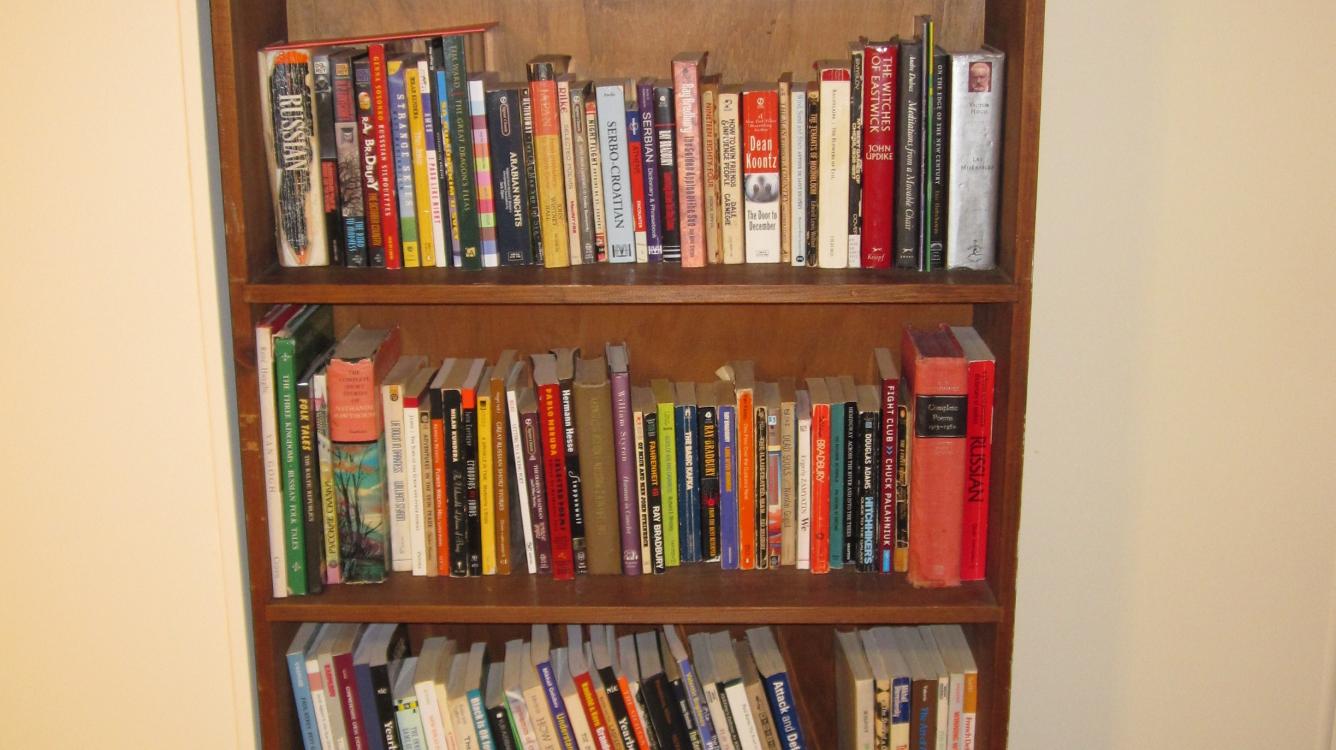
My Bookshelf: "Larsen's Selected Games of Chess"
A reader commented on my last article asking to review Larsen’s Selected Games of Chess, and I thought it would be a good idea, because this is one of my favorite books.

Bent Larsen was a Danish grandmaster and – being a few years ahead of Fischer – the West’s best hope to compete with the Soviets. He is famous for his imaginative and rather eccentric play. At his highest he was third in the world by rating. He played multiple candidates matches for the world title.
This book is a simple game collection with some autobiographical prose at the start of each chapter. It is chronological, so you can see his development as a chess player.
I think players of any level could enjoy and benefit from this book, from almost complete beginners up to the top players. The notes to the games are simple yet meaningful.
Where I got it
This is a tough one, because I can’t really remember. All I know is that it has a connection to Alaska in it – on the first page is written the name “Bill McGeary”. McGeary is a master who at some point lived in Alaska. In fact, he was the first master I ever played, in probably my third or fourth tournament – I was rated about 1300 at the time. We played in the last round in a small tournament in Anchorage. He needed only a draw to win the tournament, but considering that he was rated 900 points higher than me, you would expect him to play for a win. Some time early in the game, I was nervous and scratching a scab on my arm. It started to bleed slightly, so I went to wash it off. Then McGeary, apparently disturbed by this, decided to offer me a draw. Maybe I should try that more often.
Most likely I bought the book at Title Wave Used Books in Anchorage, where I got many chess books.
What’s good about it
The best quality of this book is that it lets the games speak for themselves. The comments are very apt and cleanly explain the games. At certain points there is a fair amount of analysis, but remember that Larsen was the one who said “long variation – wrong variation”. The student learns mostly ideas and positional themes from this book – in particular, unusual positional themes. Here is an excerpt that illustrates this (I have changed the descriptive notation to algebraic):
Black has Rook and Bishop against Queen, normally not quite enough. But the position is not normal. Notice what few possibilities there are for White to do something active. There are practically no weak points in the black camp, and if White plays passively he will find himself in a very difficult position after Black's doubling of Rooks on the b-file. He can just manage to protect his b-pawns, but then a black Rook can go to b4, attacking the white e-pawn, and perhaps next moving to d4, vacating b4 for the other Rook. A breakthrough with ...c4 is also possible.
Black's 19th move completely ruined the white King's-side pawns. On the other hand it allowed White on free move, of which he now takes advantage for a counter-attack, sacrificing a pawn to get a passed pawn.
(White now played 21.b4 to create a passed a-pawn - which was his best chance - but in the end Larsen won a fantastic game.)
How it impacted me
Essentially I think this book helped my positional understanding greatly. There are lots of sharp games and a few quiet games, but throughout all of it Larsen finds subtle positional factors which prove brutally decisive in the tactical complications.
An Excerpt
The following is part of game 21, Larsen's game as white against T.D. van Scheltinga. We will start after move 27:
At this moment the Dutch master Spanjaard entered the tournament hall. he askd Donner if anything interesting was going on, and the grandmaster said 'Yes, Larsen has a lost game!'
I am sure that this was a correct evaluation of my position. Up to now Black has played better in this game, but the situation is still so difficult for both sides that it can be useful to take advice from the words of a famous French general: "My centre is broken, my flanks are retreating, I attack!'
Spanjaard sat down right next to our table - he is very shortsighted - to see the drama.
Against 28.Qh6 Black has several good continuations. The simplest is 28...Qf7 29.e6 Bxh6 with a favourable ending, and 29...Qf6 is even stronger. Looking at such variations as these you realize that something very special must be done. 27...Bg4 is a threat. Maybe, quietly sacrifice the exchange and play on. There is a pawn for it, but it is not inviting.
However, fantastic combinations are hidden in this position. In the middle of all the misery it must be remembered that White's position is not hopeless. At this juncture he is a pawn up: he has strong center pawns: the black King is not very well protected by pawns.
Slowly you see the counterchances - and play...
Any downsides?
It’s hard to think of real serious downsides to this book. It was well written, with a great selection of nice games, and genuine comments. One technical downside is that it is written in descriptive notation (i.e. P-KNt4) which could be a problem for some. I don’t know if there is an algebraic version.
What should you eat while reading this book?
My family is mostly Danish, so I am tempted to say “aebelskiver” or some other Danish food that we used to eat. But I think just a bottle of red wine would be most ideal.






